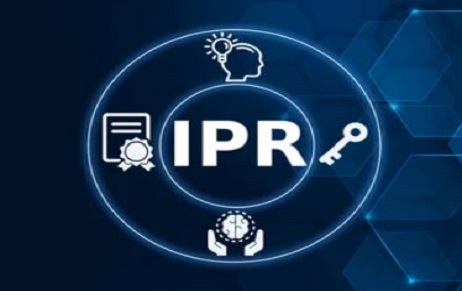Introduction In the realm of obtaining a patent right, conducting a ‘novelty search’ stands as…
Patent Searches- IIPRD’s Support Services
A patent ensures the protection of an invention for a limited period of time. Upon patenting an invention, a third party will be restricted from commercially exploiting or duplicating the invention in any manner. According to most patent laws around the world, several criteria must be satisfied in order to patent an invention. Such conditions may include the invention being a patentable subject matter, having some level of novelty attached to it, consisting of an inventive step, or having an element of non-obviousness linked to it.
The invention must be capable of industrial application as well. Applying for a patent is one of the first steps to legally protect your invention. Patenting an invention is a rather elaborate process that consumes time and money.
A professional must carry out the process of patenting an invention since several components related to it are incredibly technical. In India, the fee for filing a patent ranges from INR 14,000 to INR 20,000. Additionally, the patentee should also pay an additional fee to the patent agent or the attorney filing the patent for them. Thus, in a broad sense, patent searches can be defined as the process of searching several patent databases and other sources of literature to inspect if any pre-existing invention is similar to the patentee’s invention, for research, or for making other market-related decisions.
Why is it imperative to conduct a patent search?
Attorneys or patent agents conduct patent searches to determine the chances of being granted a patent. It also helps the patentee and the attorney to determine the differences between the invention at hand and pre-existing inventions. Upon enumerating such differences, the attorney and the patentee may draft their application accordingly, thus increasing their chances of being granted a patent. A patent search may also significantly reduce the chances of the patentee’s invention’s claims overlapping with the claims of a pre-existing invention.

Moreover, a patent search could provide information on companies attempting to patent inventions similar to the applicant’s inventions. This way, the applicant may contact such companies for licensing purposes. It is pertinent to note that even if a patent application is rejected, its claims and other details pertaining to the invention would be available on the database. Through a patent search, the patentee can assess the reasons behind the rejection of the application, which may allow the patentee and their attorney to draft the application effectively. PatentScope (WIPO), DEPATISnet, U.S Patent Assignment Database (USPTO), Google Patents, and Espacenet are the most popular patent search databases.
The most prominent types of patent searches are- Novelty/ Patentability search, Freedom to Operate (FTO Search)/ Patent Infringement analysis, Patent Validity/ Patent Invalidity Search, State of the art search, and technology landscape analysis.
Novelty / Patentability Search:
A novelty search, otherwise termed a patentability search is performed to examine the novelty pertaining to an invention before filing it. During a patentability search, prior arts (pre-existing inventions) similar to the applicant’s inventions are identified, scrutinized, and compared to enumerate the novelty of the applicant’s invention. A patentability search is vital for effectively drafting the patent application. Furthermore, a patentee can also plan their further research regarding the invention by analyzing the type of research carried out for the pre-existing inventions related to the applicant’s inventions.
Freedom to Operate search (FTO)
A Freedom to Operate search is also called a ‘clearance search’. An FTO search is used to determine the commercial viability of an invention. In other words, an FTO would help determine if there exists any invention in the market space that the applicant’s invention would infringe upon, thus, preventing the applicant from commercially exploiting their invention.
An FTO search exclusively focuses on an invention’s ‘claims’ part to examine if any other pre-existing invention has similar claims. It enumerates the chances of a potential case of infringement that could be made against the applicant’s invention by any other inventor. Typically, an FTO search is considered to be an elaborate and immensely expensive process.
Patent Validity Search/ Patent Invalidity Search
A validity search is also called an opposition study. Typically, a validity search is conducted when a defendant in a patent infringement lawsuit attempts to invalidate an inventor’s patent. Thus, the primary purpose of a validity search is to revoke or invalidate a registered patent’s claims.
Additionally, a validity search may also be conducted before entity licenses or puFtrrchases a particular patent. Through the search, the buyer or the licensee can determine the strengths and weaknesses pertaining to the patent. This way, the buyer or the licensee can avoid buying a patent that can be easily invalidated.
State of the art search
A state-of-the-art search attempts to examine a particular area of technology, thus shifting the focus from examining only a specific invention. A state-of-the-art search is generally conducted by inventors who may be interested in learning about the technological developments in a particular industry.
Such inventors study the patents pertaining to a particular industry to recalibrate their research strategies. To conduct a state of the art search, inventors may also refer to literature such as research paper publications to study the patents existing in a particular industry.
Technology landscape analysis/ Patent Landscape reports
A technology landscape analysis or a patent landscape report provides an overview of the patents pertaining to a particular area of technology. Such reports may be specific to a particular region. Patent landscape reports can be used as a piece of empirical evidence to regulate policies or to support research related to a particular area of technology. According to WIPO, patent landscape reports can also be used to “inform policy discussions, strategic research planning or technology transfer”.
Several researchers have used patent landscape reports to draw insights on the future of a particular area of technology as well. Through a patent landscape analysis, business development teams may also have a chance to identify the assignees related to a particular type of technology. This may help in sourcing potential licensing opportunities, identifying key suppliers and competitors.
IIPRD, a premier Patent Support, and IP firm have been extensively working with thousands of clients to fulfill their needs for patent services. With their strong experience in this field, IIPRD’s professionals have been assisting exemplary clients around the world with their IP support.
Author: Sanjana, a BBA LLB student of Symbiosis Law School (Hyderabad), in case of any queries please contact/write back to us at [email protected].



